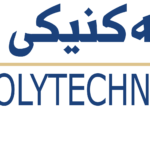- Bashir Eskander Kareem
- [email protected]
- 0750 113 4682
- P.hD. [Bashir Eskander Kareem]
-
Global energy consumption has risen over the past decade, driven by the growth in population and the economy. The building sector is the largest energy consumer, accounting for 40% of total energy and causing one-third of CO2 emissions. Half of building energy consumption goes to HVAC systems. Thermal energy storage offers an excellent method for providing sustainable energy that can be utilized for free cooling, heating, and ventilation in buildings.
The free cooling system stores thermal energy in thermal energy storage during the night and utilizes it throughout the day. Latent heat thermal energy storage is recommended due to its high energy capacity, minimal impact on temperature and volume changes. The primary challenges associated with integrating PCM in free cooling systems pertain to the thermophysical properties of PCM itself and the system's reliance on climatic conditions.
In hot climates, solidifying PCM may encounter challenges. As a potential solution, there is a proposal to incorporate an evaporative cooling system with a PCM-to-air heat exchanger, with the goal of facilitating the PCM solidification process.
In this study, the enthalpy method has been employed in the CFD model for the PCM-to-air heat exchanger, and the EES model has been utilized for the entire system. The system consists of a multi-stage evaporative cooler and a PCM-to-air heat exchanger. According to the CFD findings, the melting and solidification time is reduced with decreasing PCM panel thickness, decreasing air channel height, increasing PCM panel length, and higher flow rate of HTF. The main parameter to change melting and solidification time is the temperature difference between HTF and PCM’s melting temperature.
The primary objective of this study is to design, construct, and develop a cooling and ventilation system that incorporates both evaporative cooling and a PCM-to-air heat exchanger.
The system employs organic paraffin-based PCMs-RT21HC and RT25HC, arranged in series to reduce melting and solidification durations. Experimental and numerical findings demonstrate that starting with PCM RT21HC in the heat exchanger reduces solidification time, while initiating with PCM RT25HC shortens the melting time. Also, the results clearly demonstrate that the solidification time is significantly longer compared to the melting time. PCMs completely melt in less than 4 hours, whereas PCM-RT21HC does not solidify completely even after 12 hours.
Utilizing PAHX without a cooling system can provide thermal comfort for less than 4 hours, but when combined with evaporative cooling, the PCMs can solidify, enabling the system to operate continuously and effectively.
The system offers cooling and ventilation, effectively extending indoor thermal comfort by stabilizing the outlet air temperature through the use of PCM to air heat exchanger. Typically, the supply air temperature to the conditioned space ranges between 21 to 25°C.
- Erbil Technical Engineering College
- Mechanical and Energy Engineering
- Thermo-fluid
- Sally Afram Polus
- [email protected]
- 0750 766 6511
- Ph.D._Sally Afram Polus
-
A solar tracking system with an effective cooling technique is developed
and implemented in this study, because the solar irradiance, temperature and
dusty climate condition affected on the output of photovoltaic panel. A single
east-west solar tracking system incorporating a monocrystalline panel and a
front surface spray water cooling system was conducted and compared to a
fixed reference panel with an inclination angle 36° facing south. An appropriate
cooling system was developed with six nozzles placed on top, left and right
side of the panel, to ensure that the panel’s front surface is covered with water
from all orientations. Two different types of spray water cooling were
performed; first by adjusting the panel surface temperature (35 °C, 40 °C and
45 °C), through adjustable water flow rate, and the second was fixing the water
volume flow rate at (2 l/min, 3 l/min, 4 l/min and 5 l/min). This experiment was
conducted during the summer season of the year 2022 in Erbil, Iraq (latitude
36.191° and longitude 44.009°).
A simulation study was also conducted using ANSYS Fluent R19.2. The
experimental study demonstrated a maximum electrical efficiency
improvement reaching 9.9% which was recorded as an enhancement compared
to the fixed reference panel by using the solar east-west tracking system. While
tracking with a cooling system at 35 °C set point temperature has resulted in an
improvement in efficiency up to 25.11%. Another parameter that has been
optimized is the cooling water consumption. The optimal cooling setting
temperature was determined at a surface temperature of 40 °C. Alternatively,
upon the incorporation of a cooling system to the PV panel at setpoint
temperatures of 45 °C, 40 °C, and 35 °C, without the integration of a solar
tracking system, improvements of 18.25%, 19.94%, and 22.82% were achieved
in electrical efficiency, respectively. When the solar radiation exceeds the
power at standard operating conditions, even if the panel temperature is higher
VIII
than that of the standard test, the PV panel is able to produce the same power
as the standard test of 210 W. Additionally, integrating a solar tracking system
with cooling at a water volume flow rate of 2 L/min resulted in double the
power production compared to a fixed panel cooled at the same flow rate. This
model demonstrates that the performance of a photovoltaic panel decreased by
only 0.2-0.3% when the surface temperature increased by 5 °C within a range
of 25 to 40 °C.
The simulation results indicated that the impact of the different variables
on both panel performance as well as temperature could be accurately predicted
and the temperature of the photovoltaic panel reduced significantly, leading to
an increase in power production. The contribution from the ANSYS fluent
simulation was that solar radiation intensity is the most influential factor on
cooled PV module power production, as by maximizing solar irradiance by 100
W/m2
, the power production will be increased by 16.6%. While increasing the
water flow rate at a lower water inlet temperature improved the performance of
the photovoltaic panel. This study provides insights essential for design and
implementation of efficient photovoltaic with front surface cooling. - Erbil Technical Engineering College
- mechanical and energy engineering department
- thermo fluid
Khabat Technical Institute is organizing a table tennis course for students
Today 19.12.2023 Tuesday in the presence of Mr. Soran Zulnun Dean and Mr. Hazhar Zharo Head of Administration of our institute and Head of Students Committee, Activities Department of our institute opened a table tennis course for students of our institute.
The opening match was played between Ayub Mustafa and Ahmed Musleh.
The league consists of 20 students and the games are held daily in the students’ club.



